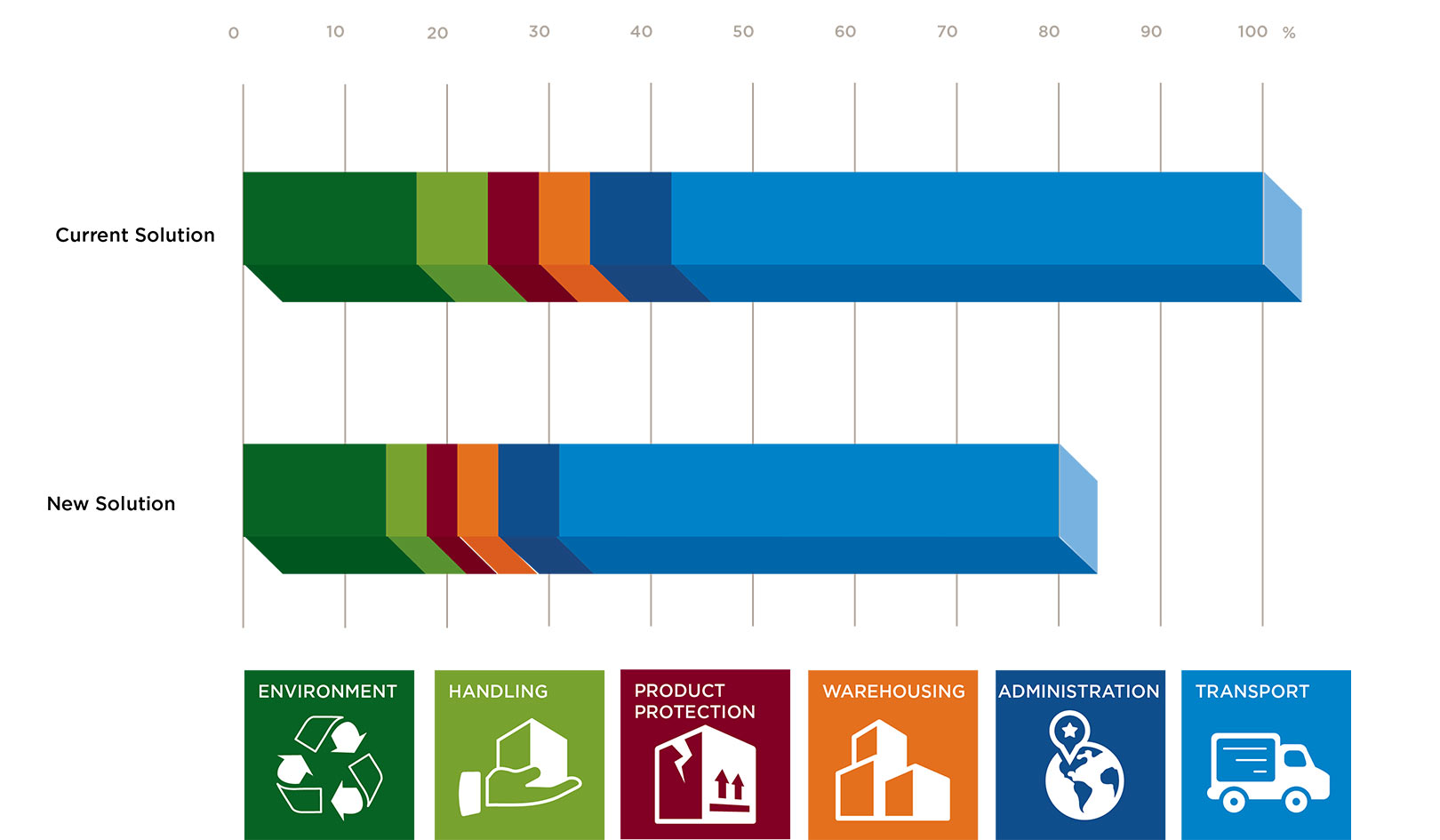If you find that you are spending more on logistics than you have budgeted on a regular basis, it may have less to do with the weight of your item and more to do with packaging. By wasting space in a package, you decrease the number of products you can ship on a single pallet. This then increases the number of pallets needed, which can greatly increase your shipping costs. It can also cause a number of other issues, including handling problems, product protection, and warehousing logistics. The Nefab total cost approach is designed to help customers achieve the packaging sweet spot – the ideal amount of packaging that protects the product while also minimizing the amount of packaging.
Why Do We Need Packaging?
Packaging plays an important role in any business that ships products. First and foremost, the goal of any package is to protect the product held within. To that end, the packaging must be durable. If it is not, the product may be damaged. If that occurs, it not only results in a damaged product that may need to be replaced, but it can also harm your reputation. If you are shipping to a retailer, they may simply return the product for a refund. If you are shipping the product to the end-consumer, though, they may not purchase from you again. At the same time, many people and retailers are very focused on the environment. They see products that come in an abundance of packaging as a waste. They don’t want to open a box and see the product buried in a large amount of Styrofoam packing peanuts. To that end, you also have to consider the most environmental packaging solutions that leave little empty space between the product and the package it’s being shipped in. Of course, sometimes this isn’t the most durable option. Finding the correct balance between these two aspects can be unexpectedly critical to the success of your operation.
Nefab's Total Cost Approach
The Nefab Total Cost Approach aims to optimize your packaging, reducing the overall cost and environmental impact while still making certain it adequately protects the product. By addressing a number of different cost elements, it is possible to determine the best type of packaging material, size, and internal packaging that provides the best protection while lowering your overall cost.

When we look at a product’s packaging, we consider how it can be redesigned to lower costs in a number of areas. Specifically, we ask questions in the following areas:
Transport – does the new packaging lower the overall cost of transporting goods? Does it allow more packages to be placed on a single pallet, container, or truck?
Handling – is the packaging easy to load, and is it safe for workers to handle? Does the packaging help reduce the amount of time needed to pack the package and load it?
Administration – does the packaging help make it easier to manage inventory? Can it allow for variable cost shipping instead of fixed cost, which often saves money?
Product Protection– does the packaging sufficiently protect the product? If it is dropped or falls during shipping, will the product be damaged? What is the minimum amount of packaging material needed to protect the product?
Warehousing – can the packaging easily and safely be stacked? How much space does the packaging take up in a warehouse rack? How much space does it take up in the receiving area?
Environmental – what is the overall impact of the packaging on the environment? Is there a lot of waste left from the packaging or the internal filling?